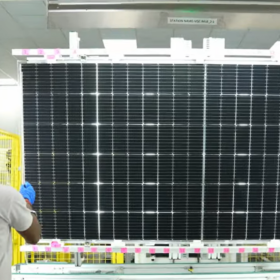As energy costs rise and climate concerns grow, OHMS Energy is partnering with educational and life sciences institutions across India to help them become more energy-efficient, sustainable, and self-reliant through solar power.
With over a decade of experience in clean energy solutions, OHMS Energy has identified a major opportunity: colleges and research institutes with high energy demands, large campuses, and a growing commitment to sustainability.
“These institutions are more than just consumers of electricity—they are influencers of change,” said Anuraag Gupta, Director at OHMS Energy. “By adopting solar, they not only reduce their operating costs but also set an example for thousands of students and researchers who will carry these values forward.”
Institutions typically consume between 200 to 1,200 kWh per day. With solar installations ranging from 50 to 250 kW, OHMS Energy helps offset 25% to 80% of their daily energy usage. A 250 kWp solar system, for instance, can reduce carbon emissions by 350 metric tons annually and save ₹17–25 lakhs per year in electricity costs.
In the long run, this translates to over ₹5 crores in savings and more than 8,000 metric tons of CO₂ avoided—resources that can be reinvested in research, infrastructure, or student development.
OHMS Energy has successfully implemented solar solutions for several forward-thinking institutions, including Vidyavardhini’s College of Engineering and Technology (VCET) in Vasai, Cheran College of Technology (part of CIT Group) in Tamil Nadu, Chetana’s Hazarimal Somani College of Commerce and Economics in Mumbai, and Namo Meridian College in Navi Mumbai. These campuses are now operating with significantly lower carbon footprints and energy costs, while also offering their students first-hand exposure to clean technology in action.
Recognizing the unique energy profiles of labs, research facilities, and clean rooms, OHMS Energy conducts detailed audits and designs customized hybrid solar solutions. These may include rooftop installations, battery storage, or grid-tied systems with smart energy management to ensure reliable and continuous power.
One of the most notable outcomes of these installations is the cultural shift they enable. With visible solar infrastructure and real-time energy monitoring systems, sustainability becomes part of the academic environment. Students and faculty often use solar data for research projects, making clean energy a part of the learning experience.
“We’ve seen institutions turn their solar systems into live classrooms—where engineering, data science, and environmental studies come together,” added Gupta.
To address challenges of limited space, OHMS Energy has introduced innovative solutions like elevated solar structures that double as shaded parking, vertical solar panels on facades, and high-efficiency modules that maximize power output per square foot.
With an eye on the future, OHMS Energy aims to build net-zero campus institutions that produce as much energy as they consume. Their long-term vision includes integrated solar systems with storage, EV charging, and smart grid solutions, setting new standards for sustainability in the education sector.
“India’s educational institutions are ready to lead by example,” said Gupta. “We’re here to help them make that shift—efficiently, intelligently, and sustainably.”





